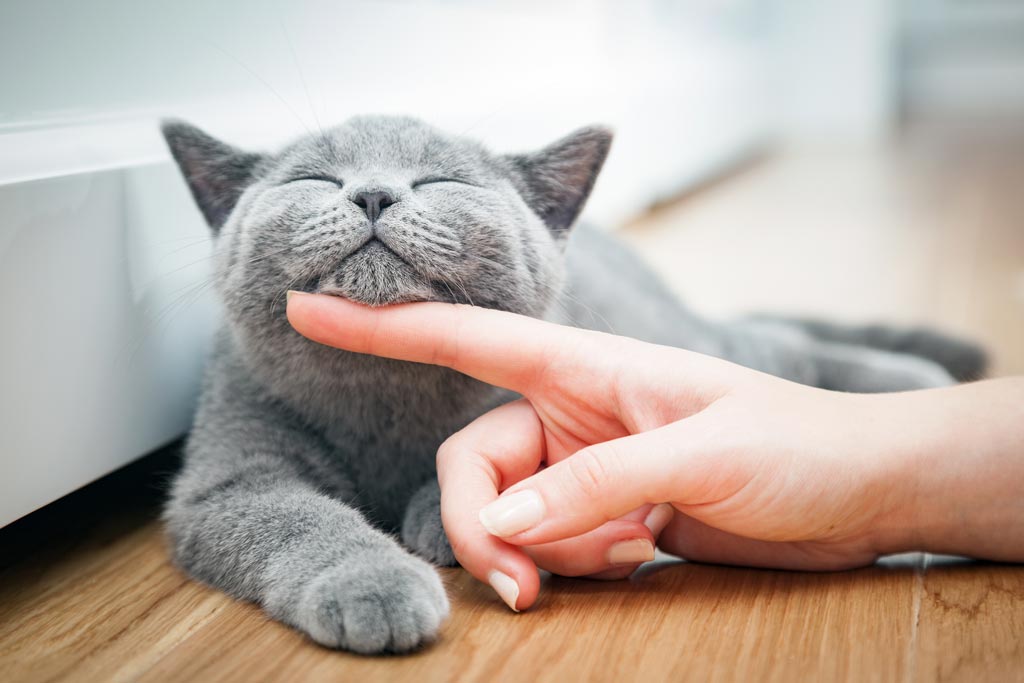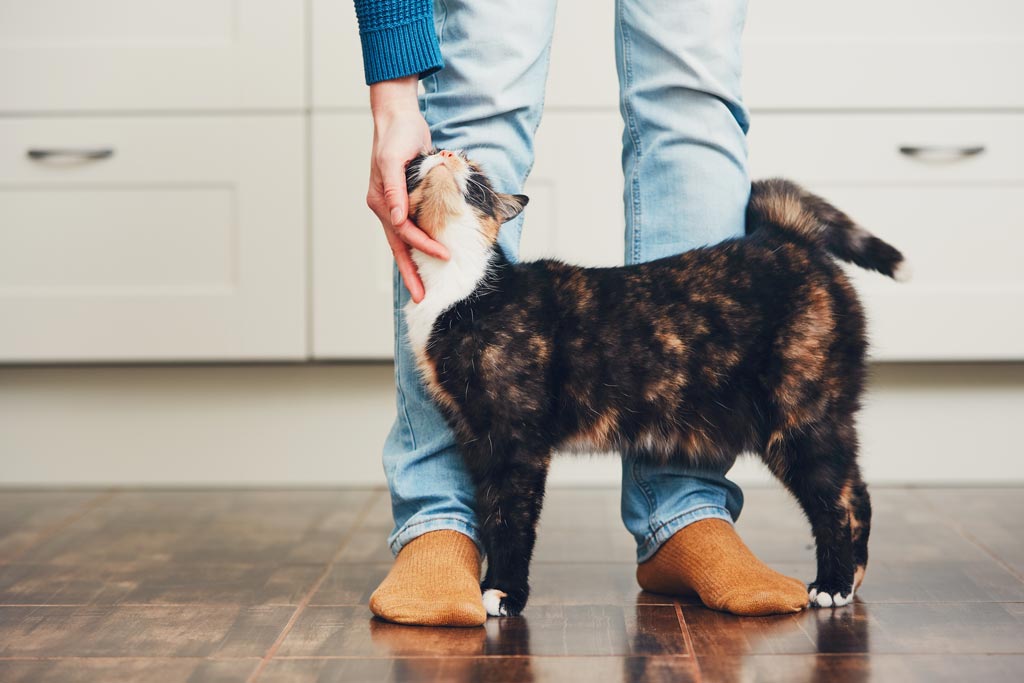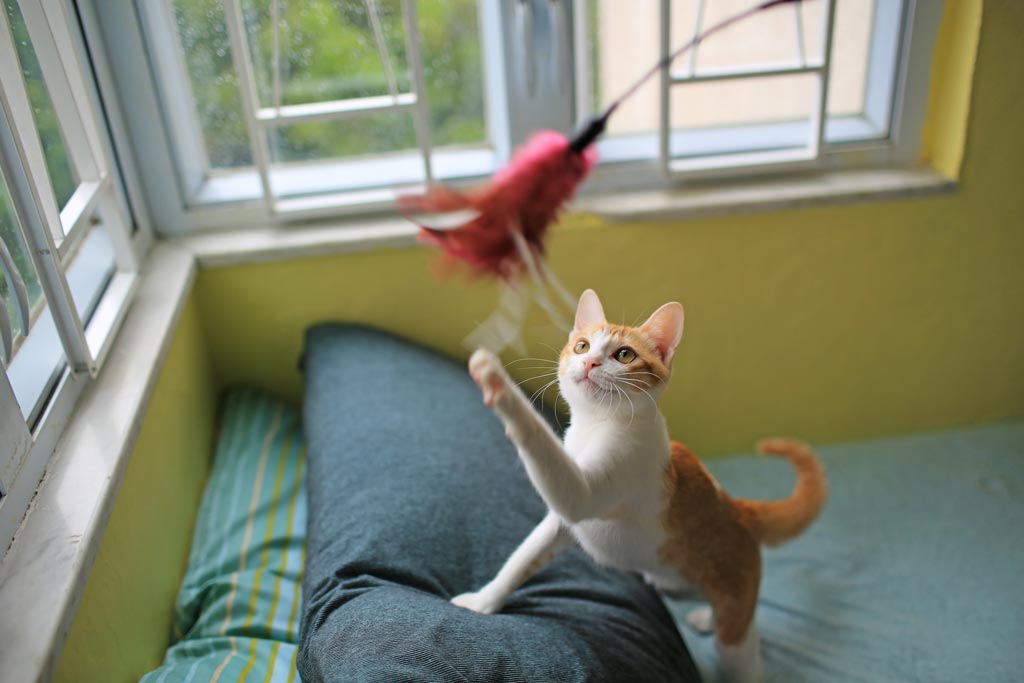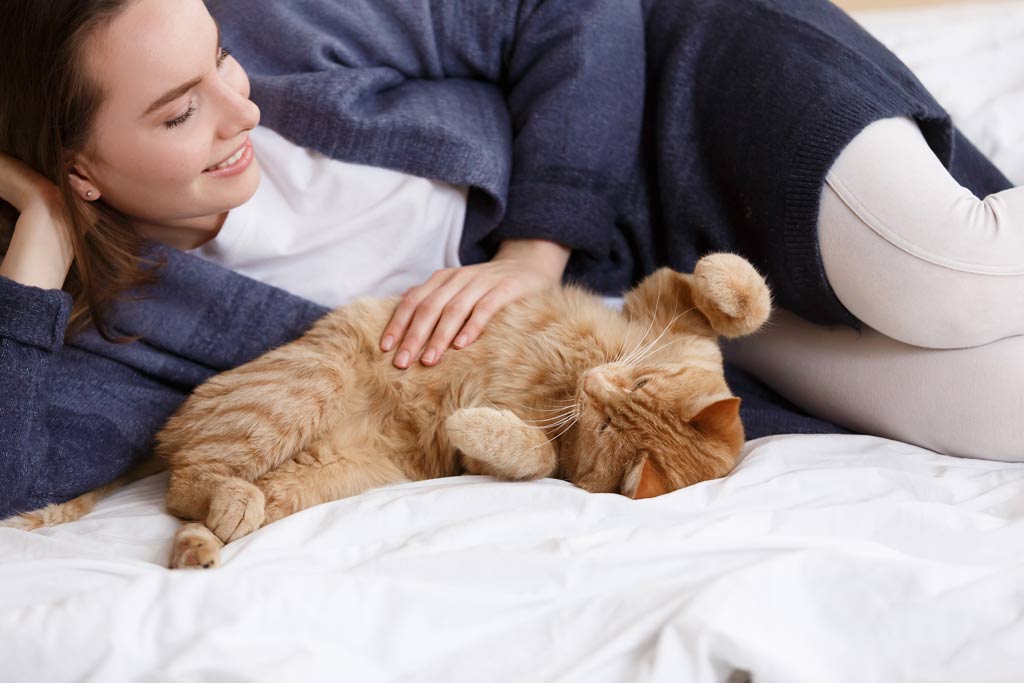Cats are mysterious creatures, and their behavior can be difficult to interpret, no matter how many years you’ve shared your home with a feline friend. To clear up misconceptions surrounding feline behavior, we’re busting a common myth wide open—cats are not generally disloyal and aloof. Read on to discover the ways your cat communicates with you, and how you can strengthen your bond with your enigmatic cat companion.
The myth behind cat behavior
Cats have gained a bad rap as being aloof, unsociable, and disloyal to their families, but nothing could be further from the truth. Like any species—people included—some animals are more outgoing than others. Cats have a wide personality range, from those who are always underfoot, to those who venture out for a quick pet and snack before disappearing again.
Despite the myth that cats are not as loyal as dogs, numerous studies beg to differ. Cats are more independent and self-sufficient, while offering the same mental and physical health benefits as dogs, making them the perfect pets for busy families, senior citizens, and people with active social lives. Cats have been known to wake their owners during a fire, alert them to burglars, and predict seizures. A recent study from Oregon State University proved that cats, like children and dogs, can form a “secure attachment” to their caregivers, which helps them feel calm and secure [1]. The researchers analyzed the behavior of 70 kittens who were left alone in a strange place, then reunited with their caregivers. Kittens with “secure attachment” became more relaxed when their owners returned, and divided their time between seeking attention and exploring their surroundings. Cats with “insecure attachment” to their caregivers became overly clingy, or completely avoided their owner. So, if your cat is more aloof than you’d like, it may be their natural behavior, or perhaps they do not feel secure in your company.

Learn to read your cat’s body language
Did you know that cats meow only at people? They rarely use such vocalizations to communicate with their own species, relying instead on body language and pheromones. Since you don’t speak cat—although those demanding meows to get you to wake up and fill the food dish are clearly understood—pick up on subtle cues your cat’s body language conveys, and learn to interpret their signals. Examples of feline body language include:
- Slow blink sequence — Have you ever noticed your cat gazing at you, while slowly blinking? This “slow blink sequence” typically involves a series of half-blinks, followed by a prolonged eye narrow or closure. Slow blink interactions appear to be a positive experience for cats, and may indicate positive emotions [2].
- Bunting — Cats say hello by rubbing the side of their face against you or bumping their head into you. This action is known as bunting, but you can think of it as a fist bump from your kitty. When your cat bumps against your hand or arm, they deposit a feline facial pheromone that marks you as safe and familiar. It can also signify ownership.
- Kneading — When settling in for a nap on your lap or a soft blanket, your cat may knead in a self-soothing motion. Kneading also releases pheromones from the paws’ sweat glands, which can mark you as a comfortable presence.

By learning to read your cat’s body language, you can correctly interpret their thoughts and feelings, thereby strengthening your bond and acting as a comfort and companionship source for your feline friend.
Tactics to strengthen your bond with your cat
Despite all the love and attention you lavish on your feline friend, do they still haughtily flick their tail as they stroll past your outstretched arms? Follow these tactics to strengthen the bond you share with your cat for an improved relationship. Remember, high-value treats go a long way toward making friends.
Greeting your cat
When you walk into a party, do you feel blessed when the owner’s cat greets you? Well, you should. You should be as welcoming to your own cat when they enter a room. Follow these tips for positive interactions with your kitty:
- Avoid direct eye contact or approaching with an outstretched hand, as these actions can be perceived as challenging.
- Allow your cat to approach you, while you use soft verbal encouragement.
- Offer a slightly closed fist for investigation and bunting.
- When your cat stops rubbing against your hand, don’t interpret this as an invitation for petting. Instead, wait for signs your cat is interested in further interaction (e.g., further rubbing, trilling, chirping, meowing, purring, upright tail).
- If your cat wants to continue the interaction, pet them in 3-second increments, letting them control whether to continue. If your cat stops rubbing against you and does not engage further, respect their wishes, and refrain from grabbing them for a snuggle.
Training your cat
Cats can learn tricks as well as dogs, although they may not deign to perform them on command. Their attention span is often shorter, so training sessions must be brief and end on a positive note. If you’re unsure where to begin training your feline friend, check out some neat tricks you can teach your cat through clicker training, following Karen Pryor’s instructions.
Playing games with your cat
Nothing promotes positive bonding more than playing a game with your frisky feline. Cats need to indulge their predatory nature, and what better way than through stalk, pounce, and catch games? International Cat Care provides several excellent games that will encourage your cat to be active, while strengthening your bond through play. Try out fishing pole toys, small stuffed animals, catnip, or cardboard boxes for a fun-filled play session with your feline friend.

Go ahead, try a slow-blink session the next time you’re chilling on the couch with your feline friend. If you’re lucky, you’ll be rewarded with an affectionate head boop, a kitty massage as your cat kneads your lap, or a slow wink as your cat shares a secret with you. By engaging in your cat’s love language, you can strengthen your bond and enjoy love and attention from a delightful, loyal companion.
References:
[1] – Vitale, K. R., Behnke, A. C., & Udell, M. A. R. (2019). Attachment bonds between domestic cats and humans. Current Biology, 29(18), R864–R865. https://doi.org/10.1016/j.cub.2019.08.036
[2] – Humphrey, T., Proops, L., Forman, J., Spooner, R., & McComb, K. (2020). The role of cat eye narrowing movements in cat–human communication. Scientific Reports, 10(1), 16503. https://doi.org/10.1038/s41598-020-73426-0

